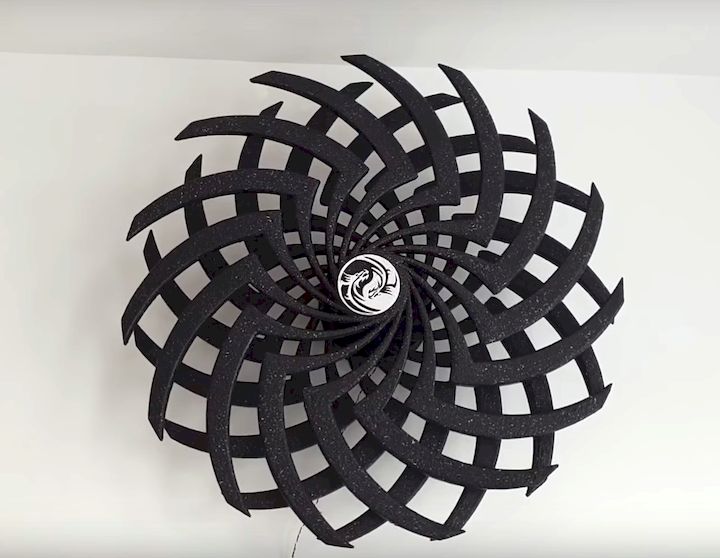![A 3D printed moire illusion [Source: Instructables]](https://fabbaloo.com/wp-content/uploads/2020/05/image-asset_img_5eb0a57f352c1.jpg)
This week’s selection is the visually mesmerizing Moire Illusion by Instructables contributor Dushyant Ahuja.
Ahuja has created a powerful visual illusion using 3D printed parts and electric motors. You might be wondering what the fuss is about, given the somewhat interesting static image at top. To truly experience this item, you have to see it in motion:
Whoa! That’s something from which you cannot avert your eyes!
Here is another view of the Moire Illusion in action:
How was this device made? Ahuja first attempted to make one based on an open source design, but was unable to locate one, having found multiple paid versions for sale. But being persistent, he decided to design his own from scratch – and release it to the public.
Ahuja used online 3D modeling tool Onshape to design the various elements comprising the Illusion. Six iterations were required to fully flesh out the design so that it would produce the desired effect when engaged.
![Gear design of the 3D printed moire illusion [Source: Instructables]](https://fabbaloo.com/wp-content/uploads/2020/05/image-asset_img_5eb0a57f87fc3.jpg)
There are quite a few parts for this project. The device is composed of three main components: two wheels holding a series of “fins”, and an electric motor assembly to drive it all. The two wheels counter-rotate and their visual overlay creates the illusion. In fact, there are 38 pieces to 3D print, including 30 fins that are attached to two wheel hubs.
![The 3D printed moire illusion’s motor system [Source: Instructables]](https://fabbaloo.com/wp-content/uploads/2020/05/moire-motor-system_result_img_5eb0a57fd3fe3.jpg)
This is a significant amount of 3D printing. Ahuja suggests a large build plate of at least 310 x 310 mm in size, which is pretty rare. I suspect it may be possible to decrease the size of the fins, but this may compromise their visual integration when in motion. You can’t shrink the motor and gear housing, however, so I’d recommend staying at the stock sizing.
I also recommend finishing the print in dark black paint or a dark filament. This will help hide the fact that there are two counter-rotating wheels and perhaps make your brain believe it’s a single morphing shape.
The motor system involves mounting two identical electric motors that drive gears that power shafts for each wheel. It’s a simple assembly, but in all the project will take quite a while to complete mostly due to the sheer amount of 3D printing required.
Ahuja has conveniently provided all the necessary .STL files for free download at Instructables, as well as the instructions for assembly of this unusual piece.
But stay tuned because Ahuja has plans to improve the design in the future, such as:
-
Thinning the fins to allow for more easy motor operation
-
Shrinking some of the parts to allow printing on more 3D printers
-
Interchangeable fins!
-
LEDs
-
Randomized movement
-
Stability improvements
This is a fascinating project that although large, is entirely doable by anyone with appropriate equipment.
Via Instructables












1 comment
Comments are closed.